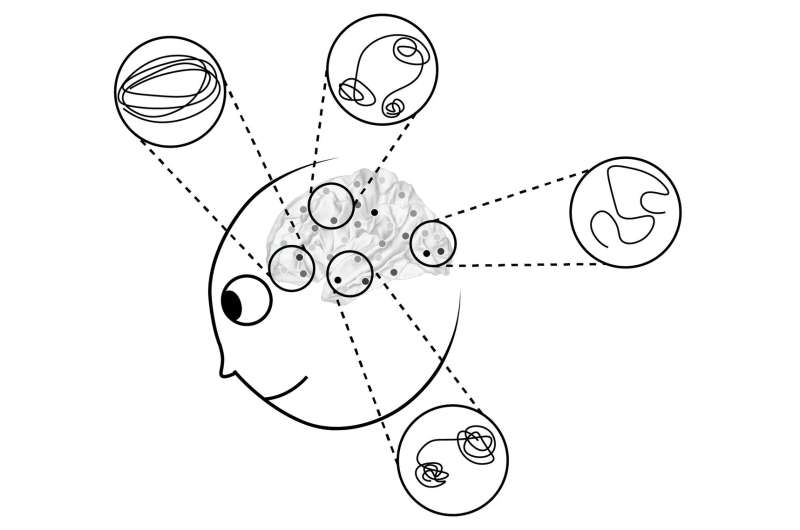July 15, 2020 feature
A new framework for understanding dynamic representations in networked neural systems

Groups of neurons in the human brain produce patterns of activity that represent information about the stimuli that one is perceiving and then convey these patterns to different brain regions via nerve cell junctions known as synapses. So far, most neuroscience studies have focused on the two primary components of neuron information processing individually (i.e., the representation of stimuli in the form of neural activity and the transmission of this information in networks that model neural interactions), rather than exploring them together.
A team of researchers at the University of Pennsylvania recently reviewed literature investigating each of these two components, in order to develop a holistic framework that better describes how groups of neurons process information. Their paper, published in Nature Neuroscience, introduces a holistic theoretical perspective that could inform future neuroscience research focusing on neural information processing.
"In the past decade or so, neuroscientists have used more sophisticated tools to understand how the brain represents things that it sees or hears in its environment," Harang Ju and Danielle Bassett, the two researchers who carried out the study, told Medical Xpress. "Some researchers studied brain representations as single patterns of brain activity, while others studied representations as changing patterns of activity. The aim of our paper was to explore how understanding the brain as a network of neural units and their connections could frame the recent developments in a way that helps push the field towards a better understanding of the dynamic nature of neural representations."
The lab led by Bassett at the University of Pennsylvania considers complex systems, such as the human brain, as networks made up of many individual parts (i.e., nodes) and the interactions between those parts (i.e., edges). The researchers refer to both large functional areas and small individual neurons in the brain as neural units. These units are typically organized into connected communities.
"We borrowed ideas from dynamical systems theory to describe how the structure of the network of neural units can determine the range of dynamics that one can observe in individual communities and across disparate communities," Ju said.
In their paper, Ju and Bassett first review the two bodies of research focusing either on neural representations or on network models. Subsequently, they also review the few recent studies that tried to account for or investigate these two components together.
After reviewing previous literature, the researchers attempted to integrate neural representations and network models into a single, holistic framework of dynamic neural representations. In doing so, they put forward two important suggestions: that each group of neurons or neuronal population has its own internal dynamics and that different populations can interact with one another to perform highly complex computations.
"Usually, neural representations are thought of as simply being transmitted from one brain region to another, much like the telephone game where you pass on a word from person to person,"' Ju explained. "What we are suggesting is more like a cocktail party where people, each with their own tendencies, interact with one another to form a highly complex fabric of conversations."
The holistic framework devised by Ju and Bassett is among the first theoretical models that consider the two primary aspects of neural information processing in conjunction. In the future, other research teams could use the framework as a general reference to investigate neural processing in its totality. It could thus potentially pave the way towards new discoveries about how neural networks process information.
"We have been working in the lab to quantify brain dynamics at the whole-brain and neuronal scales," Ju said. "We now plan to extend this work to further explore how the structure of the brain's connections can influence its representation of an ever-changing environment."
More information: Harang Ju et al. Dynamic representations in networked neural systems, Nature Neuroscience (2020). DOI: 10.1038/s41593-020-0653-3
© 2020 Science X Network



















